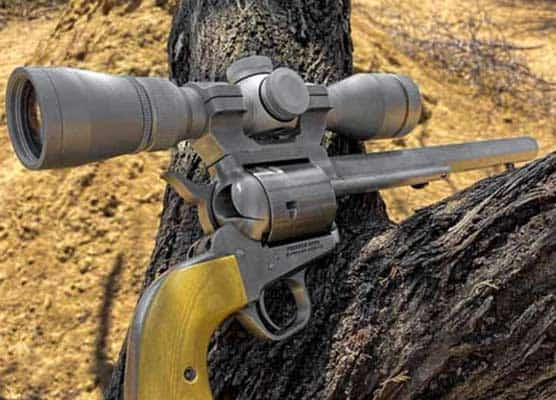How Fast Is A Bullet?
Back in ancient Greece, they measured speed using comparative methods. A bunch of naked guys would race each other in front of screaming Olympic fans. It was pretty easy to tell who was faster than the other, although determining their actual velocity was likely a challenge. Then again, if someone ran the original marathon to or from Marathon, one could presumably look at a sundial and figure out how many miles per shadow movement the runner was producing. But it would have to be a round-trip measurement because no one could radio ahead to the finish line to document the precise starting time. Measuring velocity must have been a challenge for the Greeks. As for the speed of spears and arrows? Forget it.
Modern Chronography
When I head to the range with a new gun or ammo to test, although I still get lots of “What is that?” questions, the job of accurately measuring the velocity of bullet projectiles is easy. That’s because I use what’s become my favorite device for doing said work — the Competition Electronics ProChrono DLX.
Competition Electronics ProChrono DLX
This device carries the traditional form factor of range-ready, portable chronys. The computer guts are in the same base as the optical sensors, and it has a viewing screen on the front, showing the velocity of the most recent shot. Removable metal “sticks” support the opaque plastic sunscreens that arc over the front and rear of the unit. You take the whole shebang and mount it on any standard tripod using a threaded hole in the bottom. Add a handy carrying bag, and it’s a self-contained ballistics lab that weighs next to nothing.
This one has made my favorites list for two reasons: reliability and convenience. I’ve used quite a few over the years and (by accident) shot more than one. This one stands out.
False Readings
False readings are the frustration of consumer market chronographs. I get it. Conditions are unpredictable, and manufacturers must “design in” reliability with no earthly idea of what types of conditions their gear will encounter. Bright, sunny days. Overcast days. Clouds moving in and out, creating both of those conditions. And, of course, indoor range use. And then there’s the issue of projectiles and velocity ranges. I’ve had all sorts of trouble with bullets of varying finishes, and with some chronographs, pistols have fewer missed or false readings than rifles. Or vice versa. And we’re an impatient lot, expecting our hundred-dollar gear to work regardless. This one just works nearly every time. I should have kept a log, I suppose, but it’s a rare event when the DLX doesn’t capture a reading.
Phone Smarts
The second factor is convenience. This model is Bluetooth enabled and has a supremely useful smartphone companion app. You really don’t need the onboard screen at all. You can set up your loads in the smartphone software before you go to the range, titling each string and specifying stuff like the bullet weight. When you get there, just set your phone on the bench, select the load you’re about to shoot and fire away. You’ll have a permanent record of the shot string data along with some calculated results like Power Factor, foot-Lbs. of kinetic energy, and even basic environmental data captured from your phone, including temperature, barometric pressure, etc. I frequently shoot at a busy range, so not having to go downrange to retrieve data and tinker with the chrony is a lifesaver.
Ron’s Question
While we’re talking about shooting chronographs, I figured it might be a great time to address a bit of shooting history trivia. A frequent contributor of comments, questions and hard-earned wisdom, Ron wrote in with the following.
“Over the years, I have read the published velocity of smokeless powder loads as well as occasionally some black powder loads from the late 1800s and early 1900s. With today’s chronographs, everyone can own, I’m curious how they determined the velocity back in the ‘old days.’ How did they?”
That’s a great question, and it’s somewhat impressive how folks back in the day figured out solutions to this problem without electronics.
The first and oldest method, dating back to the mid-1700s, uses basic physics and simple math to solve the problem. The momentum calculation is simply mass times velocity, so if you know momentum and mass, you can easily calculate the underlying velocity. Benjamin Robins invented a ballistic pendulum device of precisely known mass. By firing a projectile at a precise point on it, the movement of the pendulum could be measured, capturing the underlying momentum. Since he knew the bullet’s mass, he could whip out his whatever-came-before-modern-slide rules and calculate the velocity.
Later approaches used moving wheels. In one later 1700s approach, a vertical ring of paper was affixed to a horizontal spinning wheel. The idea was to shoot through the paper, and the bullet would exit the paper on the opposite side of the wheel somewhere. By knowing the rate of rotation of the wheel and measuring how “off center” the exit hole was on the opposite side, one could calculate how long the bullet was in flight (and its velocity). You gotta admit, this is particularly clever.
Next, electricity was brought into the mix, with many solutions using conductive wires or screens. A bullet breaking the same on entry and exit would make or break circuits, again providing time information of how long it took the bullet to travel across a known distance.
With the exception of the ballistic pendulum, all of these approaches modeled the same basic approach used by modern chronographs like the ProChrono DLX. This model measures how long it takes for the bullet to “break” the electric eyes at the front and back of the device, then uses simple math to offer up the underlying velocity.
We've Come a Long Way, Baby
Now, all that gear of old is contained in a light and portable kit. With an MSRP of $164.95 and street prices somewhat lower, sophisticated ballistic technology is within reach of many modern shooters. If you reload, gear like this is a must-have. Even if you don’t, it’s a heck of a lot of fun to experiment.







